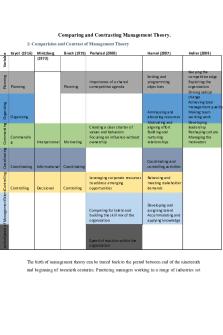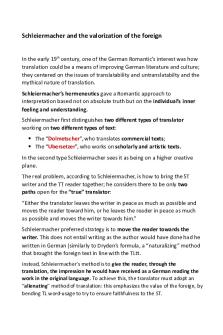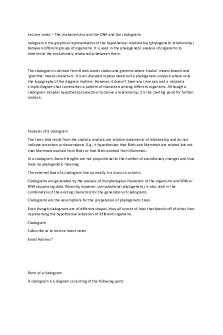Comparing and Contrasting \"The Elevation of the Cross\" (Rubens) and \"The Swing\" (Fragonard) PDF

| Title | Comparing and Contrasting \"The Elevation of the Cross\" (Rubens) and \"The Swing\" (Fragonard) |
|---|---|
| Course | Art History |
| Institution | Capilano University |
| Pages | 5 |
| File Size | 132 KB |
| File Type | |
| Total Downloads | 55 |
| Total Views | 145 |
Summary
Essay compares and contrasts two Northern Italian paintings, "The Elevation of the Cross" by Peter Paul Rubens and "The Swing" by Jean-Honore Fragonard
Uses Formal Art Analysis template (visual description, iconography, design and composition)...
Description
The Elevation of the Cross, an oil on wood painting done in 1610 by Rubens, is a 17th Century Baroque piece. It is a complete antithesis to Jean-Honore Fragonard’s The Swing, painted in 1766 as oil on canvas in the end period of Baroque known as Rococo. The Elevation of the Cross is a three-panel piece commissioned by priests to be placed in a church but was later moved to a cathedral to be seen by the church-going public. The center panel depicts Jesus crucified, with nine Roman soldiers largely struggling to raise the large, wooden cross he is nailed to. Most of them are shirtless, presumably due to the high intensity of their task, and their muscles flex at the exertion. There is a rocky, uneven landscape in the background, with Northern plants and bushes framing the edge of a cliff. On the right of the background is a diagonal sliver of skyscape, where dark storm clouds gather. There is a dog at the bottom left, barking at the nine burly men who are hauling the cross. A piece of parchment is nailed to the top of the cross, mocking Jesus as the text says “Jesus, King of Jews.” Only one of the nine Roman soldiers looks out towards us, connecting us to what is happening in the scene. This is a deeply religious piece meant to bring to life one of the key scenes in the Bible. It is depicted as being ferocious and wild, this tone being carried across with the use of a stormy sky and brutal winds that beat the foliage in the background. The mocking text above the cross signals that Jesus was not respected by the Romans, and even as they prepared to kill him, they ridiculed him. The bodies in the piece were greatly inspired by Michelangelo’s style, but were rendered in that of Baroque. They are full, expressive, and possess great potential for movement, as if once the painting is unpaused they would all be in completely different positions. Caravaggio’s tenebrism is also a factor, and the earthy colour palette is typical of 1
Northern art. Jesus’ face is very emotional compared to the blank faces of other art, and the soldiers’ expressions are all furrowed, all great details of humanistic rendering. This is an insanely loud piece, with sounds of struggle, grunting, the barking of a dog, squeak of wood as the cross raises, and the howl of the wind. Where Renaissance paintings are typically quiet, this one raises a cacophony of violence. An incredible sense of emotionalism is created in the way the wind passes through the scene and the dog’s involvement, as well as Jesus’ resigned and hopeless expression. The piece has the illusion of visual texture, once again with the dog’s wet and matted fur, and that is a stark contrast to the cold, hard armour of the Romans. There is a lot of emphasis on geometry that adds emotion to the work, namely the pyramid that draws the eye through the painting. A dominating diagonal line runs along the length of the cross and a spiral connects the heads of the men. The movement that is suggested through this spiral is infinity. Regarding space, the piece was made with the inclination that once the cross is fully raised, its base will fall out of the frame and enter our own world, with the space of the piece continuing out into the cathedral. There is a spotlight showering the subjects in a harsh light, with the source coming from the exposed sky on the upper right. The light gives the piece great contrast of value and sculpts shapes out of fabric and muscle, which aids the look of the burly soldiers. This piece is very typical of Baroque in its emotionalism both in tone and mood, as well as the naturalism in the figures. Classicism foreshortening of the body is reminiscent of classic Greek, Roman, and Renaissance art, and the dark yet saturated colour palette is a staple of this style. On the other end of the spectrum is The Swing, an intrigue painting commissioned by a patron who wanted himself pictured in the process of a young, virgin woman. Initially, the piece 2
was proposed to a different painter who refused it due to the adult subject matter. This painting was meant to be viewed privately in the patron’s living quarters. The picture is dominated by a young, blonde woman in pink robes, swinging from a beautiful, red-velvet-cushioned swing attached to the branch of an old, gnarled tree. The tree rises from the right to the top left of the frame, its leaves forming the right and top edges of the painting. The woman is in the forward momentum, with her long hair pulled up and protected by a straw hat. A beautiful choker on her neck is adorned with a bow. Her dress shows the white linen of an undertunic as it is tossed upwards by the movement, and as she pushes forward, her golden slipper flies off her left leg. She gazes down to the lower left, where the patron is pictured dressed as a French nobleman, with powdered or dyed white hair, and grey clothing. He has crossed a stone fence behind him and fallen into a garden, supporting his body and holding onto his hat, which he stretches out towards the woman to allow her a view of his body. A rake lies at the bottom of the frame. The man is looking up the swinging woman’s skirt and at her privates, as in this time period women did not wear underwear. Cupid is up at the top of the fence, his statue holding a finger to his lips, and in the background sits the woman’s guardian. He is situated on a bench, holding the reigns that push the swing, and is turning a blind eye to the flirtation in front of him. Two more cupid statues are carved into the bench beside the guardian. Like Elevation of the Cross, there is a dog at the bottom, but this one is tiny and does not look aggressive. The set of the piece is theatrical, tying it to the end period of Baroque (Rococo) through scandalous subject matter. This is a sensual painting, one far different than the religious context of Rubens’ panel. The patron’s falling into the garden is a euphemism for sexual intercourse, with the garden referring to a woman’s privates, and the status of the patron is further 3
confirmed by the rake beside him. A “rake” used to be a name given to a man who spends money on women and gambling. The dog in the picture is a symbol of fidelity, leading to the assumption that the woman and the patron will soon participate in some adult activities. The three cupid statues also make the intent of the couple obvious. The piece is painted with overall pastel hues, with soft blues and greens in the background and delicate leaves. This is vastly different to the Cross, where colours were dark, saturated, and harsh. The pale peach of the woman’s dress is the focal point of the piece, and she is situated directly in the middle of the frame. Similar to Rubens’ piece, diagonal lines are evident throughout, namely in the swing, the looping branches, the lean of the cupid statues, the subjects’ gazes, the reigns of the swing, and the man’s outstretched arm. The piece is showered in loose light coming from the upper left, and its hazy illumination gives the scene an almost dream-like sense. The woman is in a soft spotlight. Because of the softness of the light, clothing and skin have less contrast, giving them a fuller and more delicate look. Unlike Elevation of the Cross, The Swing is much more elegant, romantic, and soft-hued. This piece is very much Rococo in its depiction of seduction and its aim to set the stage of a comic opera. The intrigue painting is a reflected art style of nobility. Overall, the tone and subject matter of Elevation of the Cross and The Swing could not be more different, but similarities still show through in the elements of design between both paintings. The pieces contain strong use of diagonal lines, spirals, and pyramidical geometry to accentuate the portrayed emotion. Both also feature very humanistic renders of people, from expressions to dynamic poses. Where the paintings begin to differ is in the palette and the shade contrasts made from this choice. Elevation of the Cross is dark and angry, with deep blacks and very little gradation between shadow and highlight. The hues are vibrant and 4
saturated, much different from the pastels of The Swing. Fragonard’s work is gently shaded, with little to no black being used for the shadows at all. Moreover, The Swing is incredibly quiet. Some sounds could be carried over from the Cross, such as the squeak of wood and the rustle of leaves, but in this scene, they would be far calmer. The squeak would be hypnotic as branches dipped along to the momentum of the ropes, and the leaves would woosh as a whisper instead of a stormy howl. That being said, both pieces are stunning works of art, portraying strong emotion, beautiful scenery, and leaving us all with much to think about after we see them.
Additional Information
- Context: Rubens’ painting is also emblematic of the Catholic Counter Reformation, the Council of Trent, while Fragonard's painting is indicative of the reign of French King Louis XV (r. 1723-1774) - Period Detail: Rococo art catered to the wealthy nobility, many of which now had large townhomes in Paris. Rococo is an aristocratic and decorative style.
5...
Similar Free PDFs
Popular Institutions
- Tinajero National High School - Annex
- Politeknik Caltex Riau
- Yokohama City University
- SGT University
- University of Al-Qadisiyah
- Divine Word College of Vigan
- Techniek College Rotterdam
- Universidade de Santiago
- Universiti Teknologi MARA Cawangan Johor Kampus Pasir Gudang
- Poltekkes Kemenkes Yogyakarta
- Baguio City National High School
- Colegio san marcos
- preparatoria uno
- Centro de Bachillerato Tecnológico Industrial y de Servicios No. 107
- Dalian Maritime University
- Quang Trung Secondary School
- Colegio Tecnológico en Informática
- Corporación Regional de Educación Superior
- Grupo CEDVA
- Dar Al Uloom University
- Centro de Estudios Preuniversitarios de la Universidad Nacional de Ingeniería
- 上智大学
- Aakash International School, Nuna Majara
- San Felipe Neri Catholic School
- Kang Chiao International School - New Taipei City
- Misamis Occidental National High School
- Institución Educativa Escuela Normal Juan Ladrilleros
- Kolehiyo ng Pantukan
- Batanes State College
- Instituto Continental
- Sekolah Menengah Kejuruan Kesehatan Kaltara (Tarakan)
- Colegio de La Inmaculada Concepcion - Cebu















